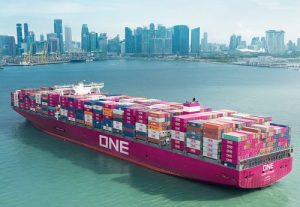 The number of people infected with the new corona virus in the United States continues to increase. For the first time on November 4th, the number of infected people per day exceeded 100,000. The number exceeded 120,000 on 5th, with total exceeding 9.6 million (death toll 234,000). Under such circumstances, the US presidential election was held on November 3rd. About 160 million people voted. The voter turnout exceeded 66%, which is the highest level in the past 120 years. Postal voting and early voting under COVID-19 pandemic greatly influenced the election results. 100 million people, who account for 62% of the voters, voted by post or early. The number is the highest ever. Postal voting worked in favor of the Democratic Party, and as of today, some votes are still being counted, but Joe Biden has won 279, more than 270 (majority) of the electors needed to win. On January 20th next year, he will be the 46th president of the United States at the age of 78, the oldest ever as US president. Senator Kamala Harris will become the first female vice president in history. The Trump administration has lost the presidential election, which is said to be advantageous to the incumbent, and will serve out its role in one term, four years.
The number of people infected with the new corona virus in the United States continues to increase. For the first time on November 4th, the number of infected people per day exceeded 100,000. The number exceeded 120,000 on 5th, with total exceeding 9.6 million (death toll 234,000). Under such circumstances, the US presidential election was held on November 3rd. About 160 million people voted. The voter turnout exceeded 66%, which is the highest level in the past 120 years. Postal voting and early voting under COVID-19 pandemic greatly influenced the election results. 100 million people, who account for 62% of the voters, voted by post or early. The number is the highest ever. Postal voting worked in favor of the Democratic Party, and as of today, some votes are still being counted, but Joe Biden has won 279, more than 270 (majority) of the electors needed to win. On January 20th next year, he will be the 46th president of the United States at the age of 78, the oldest ever as US president. Senator Kamala Harris will become the first female vice president in history. The Trump administration has lost the presidential election, which is said to be advantageous to the incumbent, and will serve out its role in one term, four years.
The US unemployment rate announced on November 6th by the US Department of Labor was 6.9% (1.0% down from the previous month), improving for 6 consecutive months. The economic growth rate for the July-September period has recovered sharply to 33% per annum from the previous quarter. It can be said that US President Trump has achieved economic results under this corona pandemic. US presidential election might have had a different result if a vaccine against COVID-19 had been developed before the election and vaccinated to the American people.
In Europe, the re-spread of COVID-19 infection would not stop. On November 7th, the number of people infected per day in Europe passed 300,000 for the first time. The number of patients per day hit 60,000 in France, 30,000 in Italy, and 20,000 in the United Kingdom, Spain, Poland and Germany respectively. Due to increasing concern about the collapse of medical care system, European countries have begun to restrict actions, including a second blockade of cities (lockdown), in order to prevent the coming second wave of COVID-19 infection, placing more importance on infection control than the economy. As a result, real economic growth in the Euro area from October to December managed to remain minus 0.1% from the previous quarter. Growth rate in 2020 was revised to minus 7.8% from the previous year and 4.1% in 2021. Unemployment has a large impact on the service industry, which occupies 75% of all employment. The unemployment rate is expected to remain high at 8.3% in 2020, 9.4% in 2021, and 8.9% in 2022. Among them, the unemployment rate under the age of 25 is high at about 18%, leaving a possibility of social unrest factors. High unemployment will result in lower consumption, lower tax revenues and lower productivity. European countries are preparing additional budgets for job retention and compensation for absence from work. The amount would be 20 billion Euros in France, 5.4 billion Euros in Italy, and Spain is also considering concrete measures. As a result, the balance of public debt in 2020 (compared to the previous year) will deteriorate to 119.8% in France, 159.6% in Italy and 120.3% in Spain.
The recovery of the Chinese economy is rapid, and the real economic growth rate from July to September 2020 expanded to 4.9% year-on-year. In January-March 2020, it recorded the first negative growth ever since 1992, but turned positive in April-June 2020. Imports from July to September 2020 increased by 4% from the same month of the previous year. Investment in condominiums and infrastructure by state-owned enterprises increased due to monetary easing measures. Exports of masks and personal computers increased. Domestic consumption has recovered, driven by increased consumption of luxury brand products and sales of luxury cars.
The momentum of export from 18 Asian countries / regions to North America has been gradually accelerating since around July. The reason of the acceleration is a new house construction boom in the United States, which is caused by the increase in remote working due to COVID-19. Sales of newly built single-family houses in August increased by 43.2% year-on-year to 1.011 million cases. This is the highest level since the housing boom in November 2006, before the Lehman shock. The low 30-year fixed mortgage rate of 2.9% is also supporting this boom. On the other hand, the national character that prefers DIY and enjoys natural life such as camping to avoid three Cs (closed spaces, crowded places, and close-contact settings) characterizes the current personal consumption in the United States. This can be seen in the export items to North America from the 18 Asian countries / regions, compiled by the Japan Maritime Center. Exports to North America from 18 Asian countries / regions decreased from October last year to this June compared to the same period last year. It recorded 1659,088 TEU in July (0.9% up year-on-year), 1,829,016 TEU in August (13.6% up year-on-year), and 1,776,303 TEU in September (13.7% up year-on-year). This increase in export is not a transient one.
 Ocean Network Express (ONE) will put in service extra vessels for the west coast of North America calling at Japan in mid-November, to solve the issue of the weekly rollover from Japan to North America. It is extremely rare. This action indicates ONE is a Japanese shipping line, and that they put much importance to Japanese shippers. By the way, in the first half of 2020 (April-September), ONE recorded 682 million dollars of profit after tax, which was about 4.4 times the same period of the previous year. That is a significant increase. ONE achieved a surplus of $ 167 million in the first quarter (April-June) and a remarkable surplus of $ 515 million in the second quarter (July-September). Its full-year profit forecast is a surplus of $ 928 million, which is 8.8 times higher than the previous year.
Ocean Network Express (ONE) will put in service extra vessels for the west coast of North America calling at Japan in mid-November, to solve the issue of the weekly rollover from Japan to North America. It is extremely rare. This action indicates ONE is a Japanese shipping line, and that they put much importance to Japanese shippers. By the way, in the first half of 2020 (April-September), ONE recorded 682 million dollars of profit after tax, which was about 4.4 times the same period of the previous year. That is a significant increase. ONE achieved a surplus of $ 167 million in the first quarter (April-June) and a remarkable surplus of $ 515 million in the second quarter (July-September). Its full-year profit forecast is a surplus of $ 928 million, which is 8.8 times higher than the previous year.
The container operation ratio in leasing companies fell below 95% at the end of June, as seen in Triton’s performance, but it’s exceeded 97% in mid-September. At the end of October, major shipping lines secured new containers from leasing companies with a long-term lease of 5 to 10 years due to an unexpected increase in exports after China’s National Day, and they even secured containers, though few in number, in China’s depots, under over 1-year use contract. Considering that the leasing companies ordered a half of 278,847TEU of new dry container stock at the end of October in Chinese factories and they also ordered a half of 316,790TEU of new dry containers built in October, it can be said that shipping lines leased in as many as 300,000 TEU containers, or secured as many as 600,000 TEU including the orders placed by themselves in October only. By the way, factories’ inventory at the end of October was 327,063TEU (Dry: 278,847TEU, Reefer: 48,216TEU). The new container price is $2,450 per 20f dry.
Lastly, I would like to announce you two things concerning public relations. The first one is Thermo King (EFI is acting as their agent in Japan), has announced on Friday, October 9th that, by changing the software, the existing Super Freezer (reefer container that has cooling capacity down to -60℃ now) can be further cooled down to -70℃ which is suitable for COVID-19 vaccine transportation. And the industry newspaper picked up this topic on Monday, October 12th. The response to the article was great, and we were asked for more information from our customers. Even if a vaccine is developed, it cannot be used effectively without a means of transportation. Super Freezer is the only refrigerator capable of cooling to -60℃ or -70℃. Most of the people who made inquiries seem to be considering to use the reefer for transportation and storage purpose. We have come to know that so many people are longing for the development and use of the COVID-19 vaccine. The second point is that a reporter from the Nihon Keizai Shimbun visited us on Monday, October 19th and asked why container prices were soaring up and container shortages occurred, and how long this situation would last. I explained for an hour and a half so that the current situation could be recognized correctly. In the morning edition on Saturday, October 24th, my comments were posted in 7 lines on the top of page 17 under the heading “Increasing shipping container prices”.
(Translated by Ms. Chizuru Oowada)